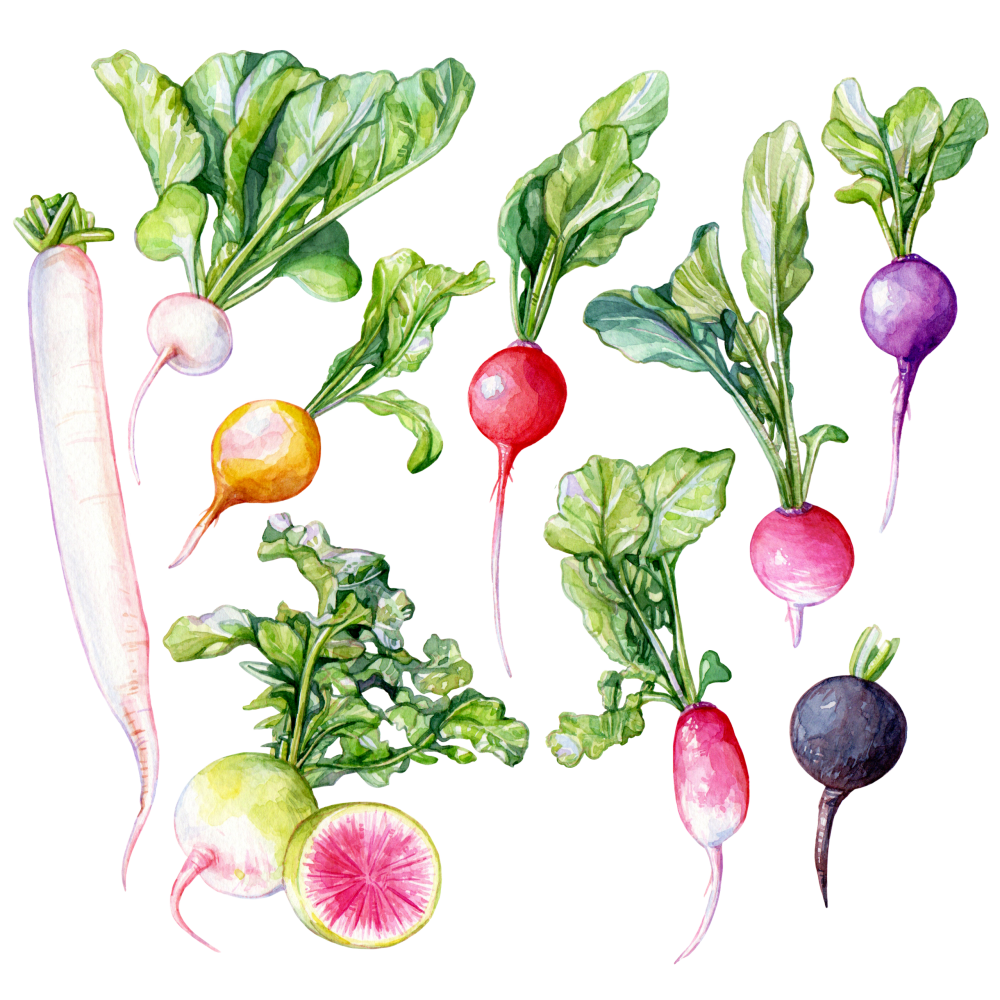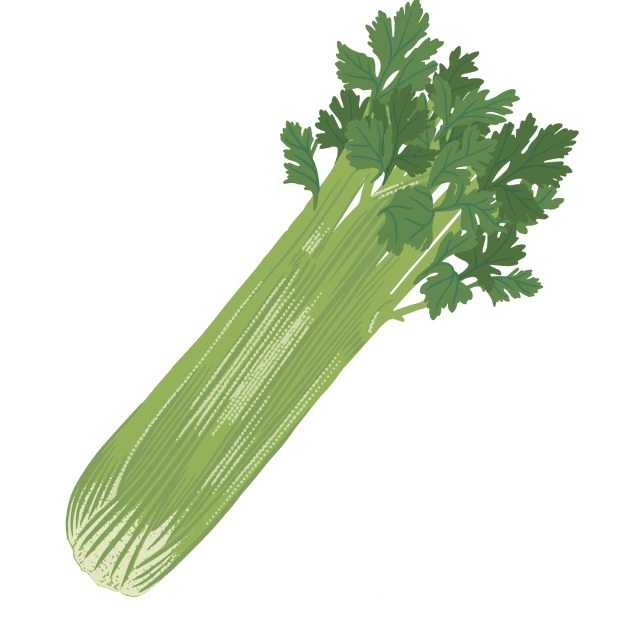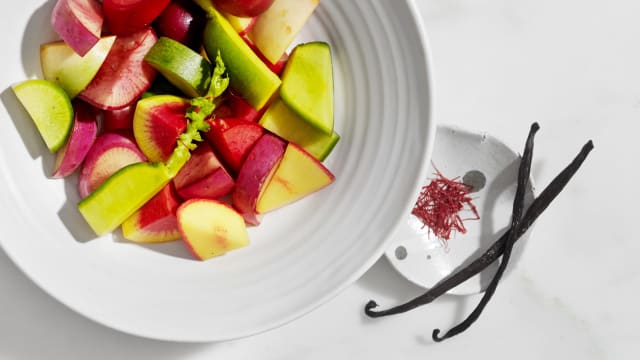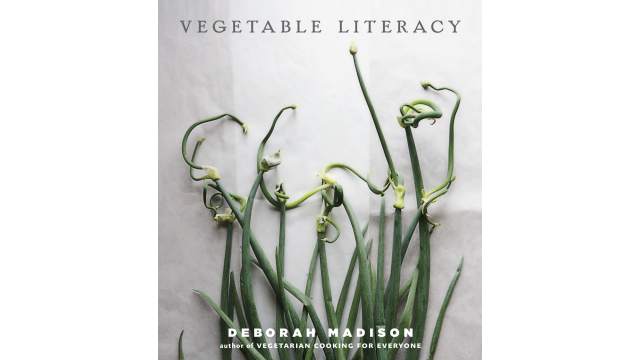Radish

Latin name: Raphanus raphanistrum spp. sativus
Uses: vegetable (sprouts, root, leaves, and blossoms)
What are radishes?
Radishes are root vegetables in the mustard family. These pungent heralds of spring are a marvel of variety — they range from delicate French breakfast radishes to Korean mu as big around as a child’s leg. There are tiny icicle varieties, purple and green daikon, long red ones that look like carrots, black radishes, watermelon radishes — each as lovely to behold as the last.
Why are radishes healthy?
Beyond their bright, juicy crunch, radishes also deliver vitamin C and fiber as well as a host of other vitamins and minerals. Like all members of the mustard family, radishes are full of antioxidant phenolic compounds that can support liver and cardiovascular function and protect against diabetes.
What do radishes taste like?
Radishes are pungent like other mustards, owing to their high amounts of the sulfurous chemical compounds glucosinolate and isothiocyanate and the enzyme myrosinase. Some radishes, like the so-called “breakfast” radishes, are milder. Even the sprouts and flowers convey some amount of heat.
How do I use radishes?
Honestly, all a radish needs is a smear of butter and a pinch of salt. Radishes are pretty standard additions to crudités platters (they love creamy dips), but they’re also wonderful pickled, as is the custom in Southeast and East Asia. Pickled in a sweet vinegar (with or without carrots), radishes are often served as toppings for bánh mì, with Korean fried chicken, or as a snack served alongside peanuts in some Chinese cuisine. In Japan the pickles are sometimes fermented in rice bran or in a deep reddish-purple syrup to brighten up a bowl of curry rice. Koreans make a couple different types of radish kimchi, plus a bright yellow bran-fermented radish commonly used in gimbap.
Radishes also love being cooked — especially roasted or braised. Toss them in a little honey and balsamic vinegar and roast them until they’re tender and sticky. Sliced radish is a standard addition to Asian hotpots and soups. Radish greens make a fine (if intense) pesto — add a blob to white bean soups and risottos for a punch of color and flavor or use the greens in saag where aggressive spicing will stand up to the pungency.
What do radishes pair well with?
As mentioned before, radishes adore butter and salt, and also East Asian flavors like ginger and soy sauce, and earthy flavors like lentils or other legumes, where radishes add a bright and welcome contrast.
Where do radishes grow?
Radishes are a fast-growing cool-weather crop that were first domesticated in Asia and have been grown throughout Europe since antiquity. There are spring/summer varieties as well as winter varieties; icicle, French breakfast, and Cherry Belle (the red-skinned type we see most in markets) are spring/summer varieties that grow quickly. Daikon, black radish, and Korean radish (mu) are winter varieties that plod along slowly from fall through winter.
How to buy radishes:
Look for bright, firm roots, preferably with the greens still on. Greens should not be yellow or wilted. Store them wrapped in a damp paper towel in the crisper drawer for a week or so.
Fun radish fact:
Giant white daikon radishes are so beloved in Japan that they even have a variety of cuddly radish plushies like the character Aokubi Daikon (an anthropomorphic daikon who’s also the star of his own book series) as well as huggable daikon-shaped body pillows to help lonely people sleep.





